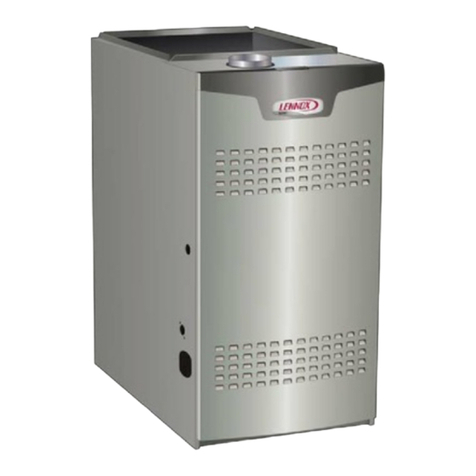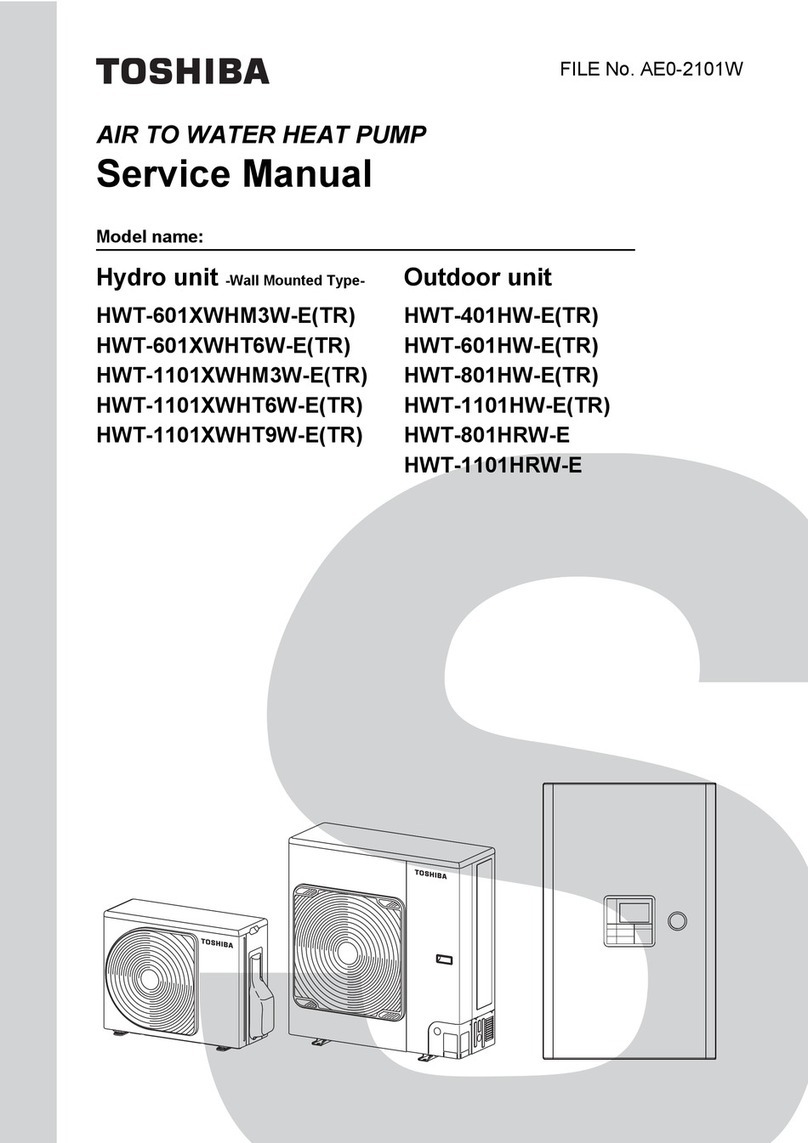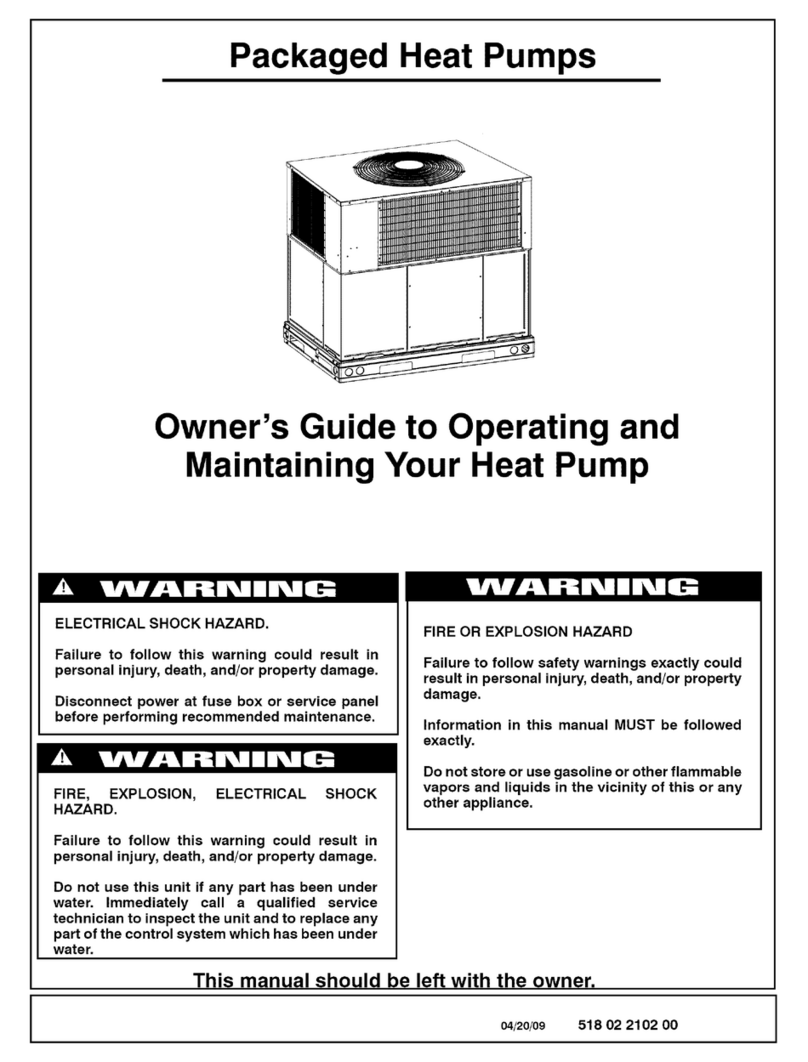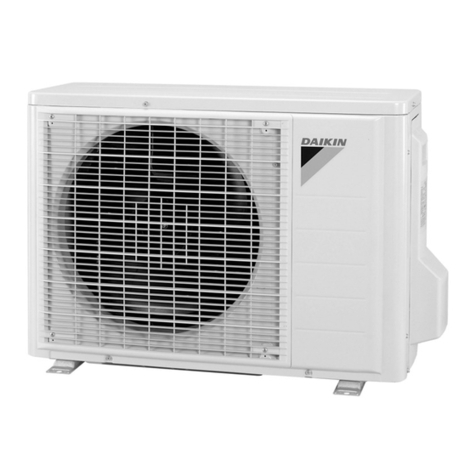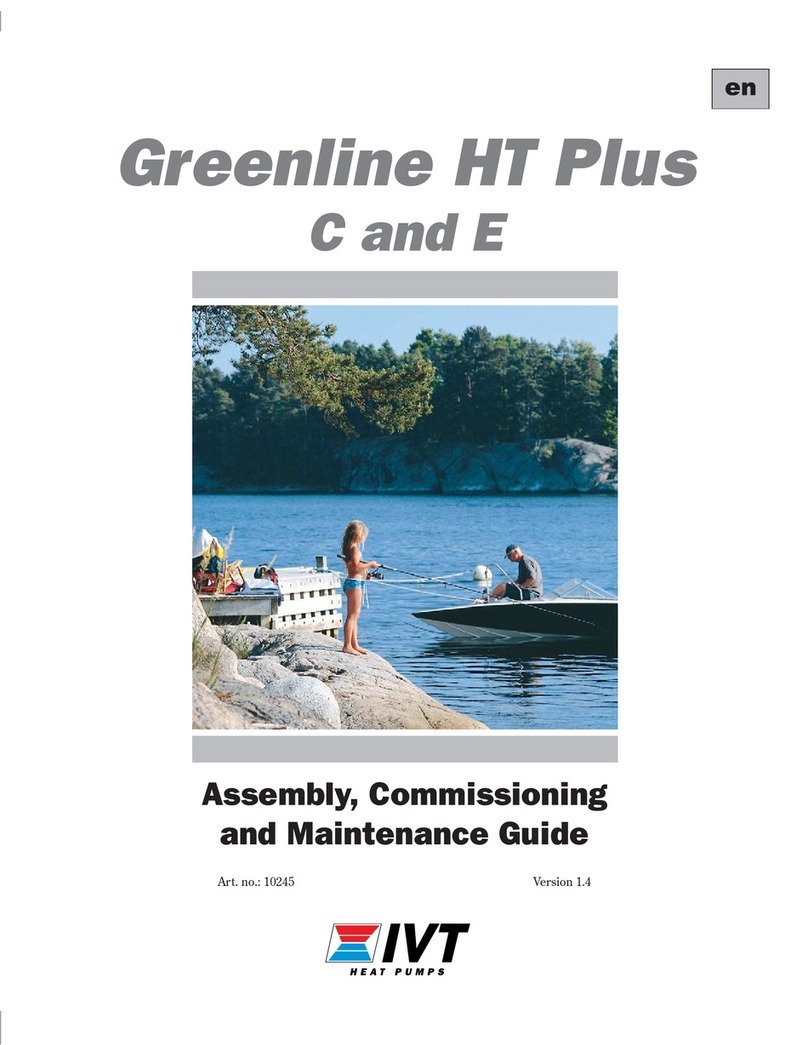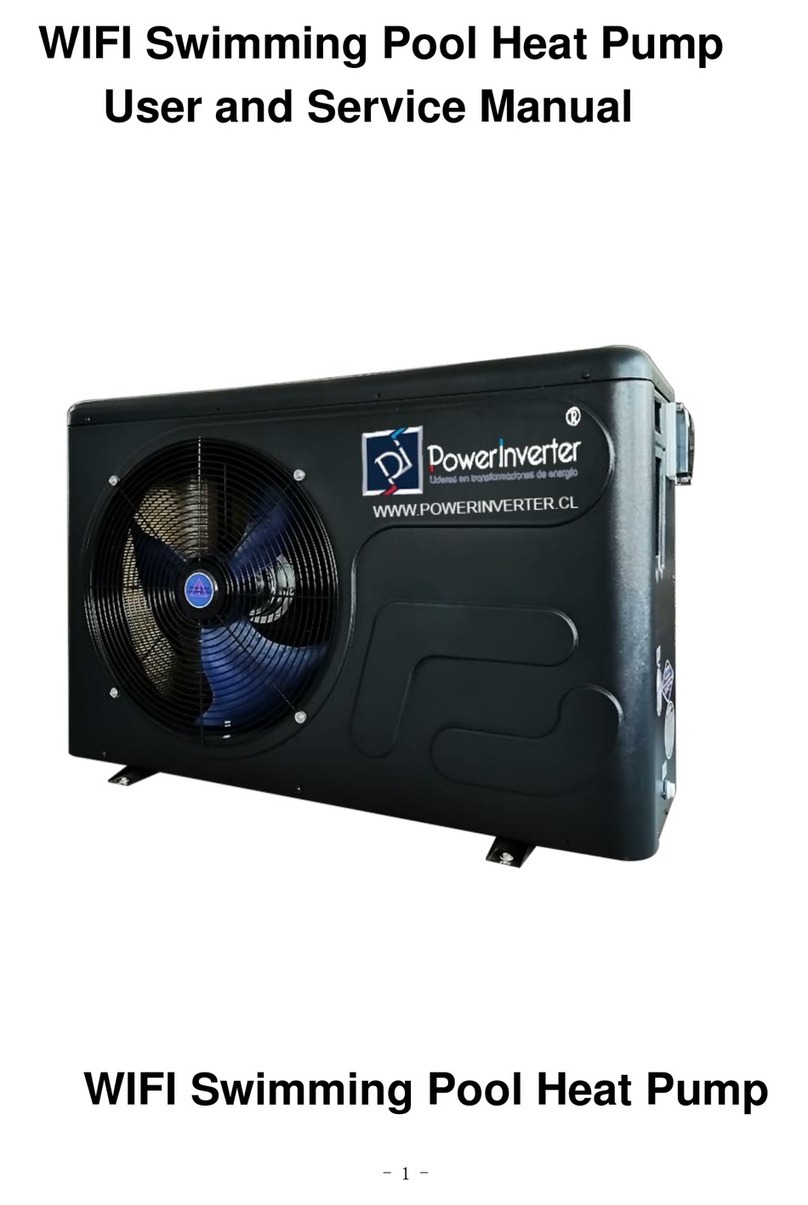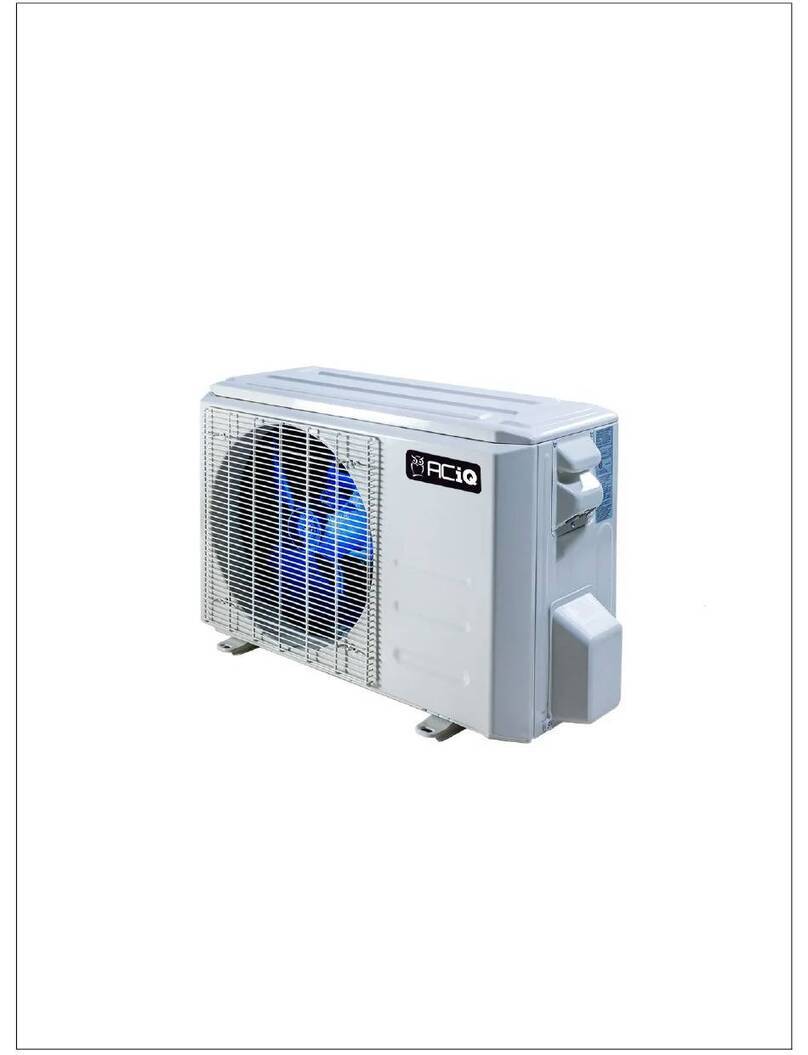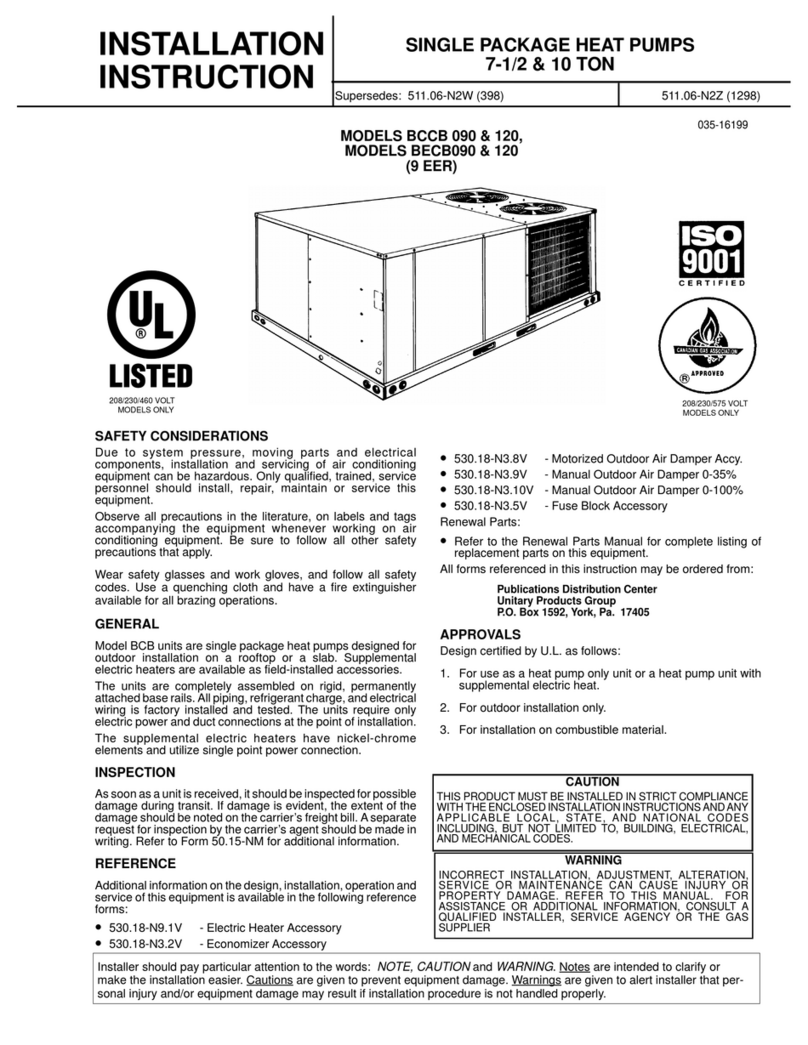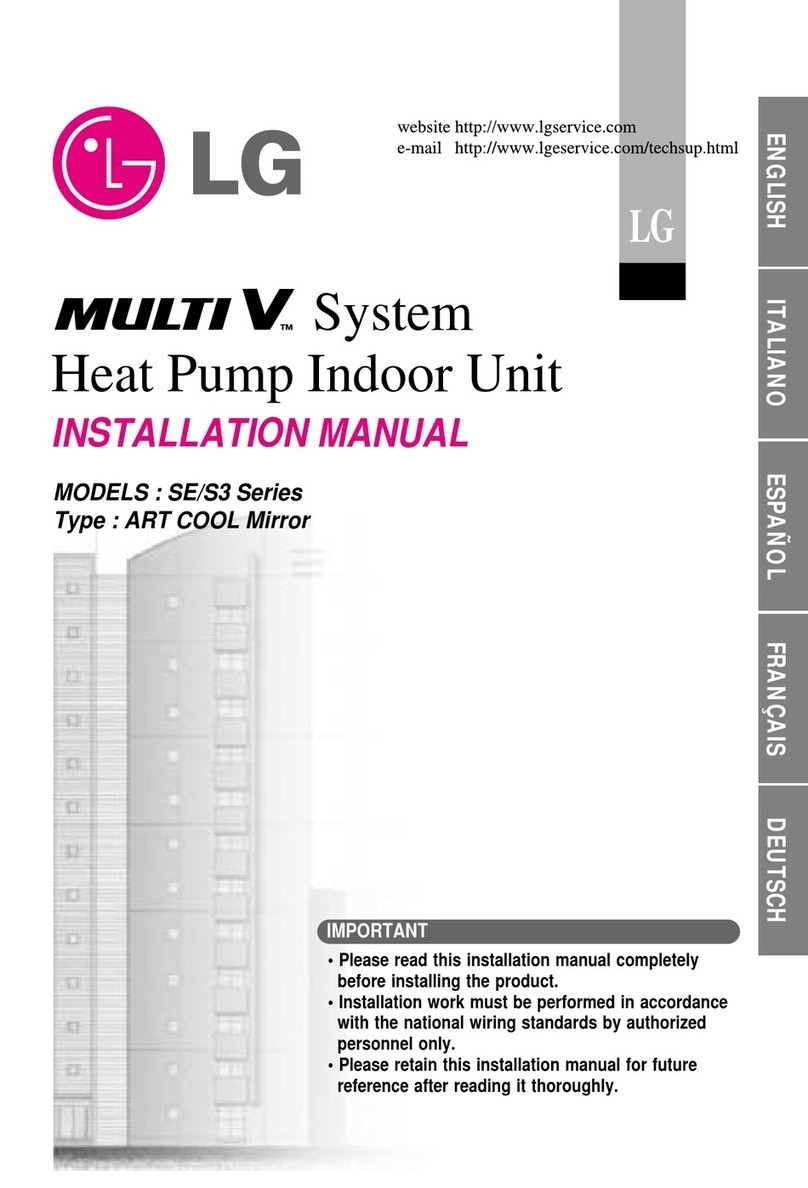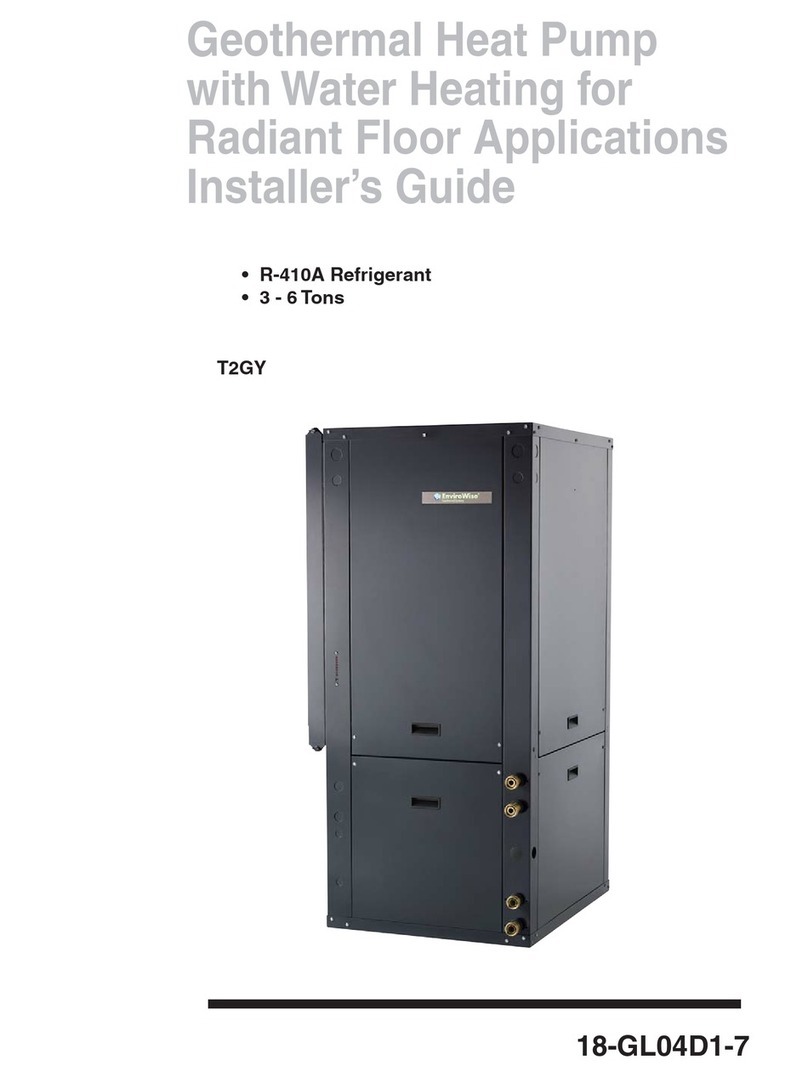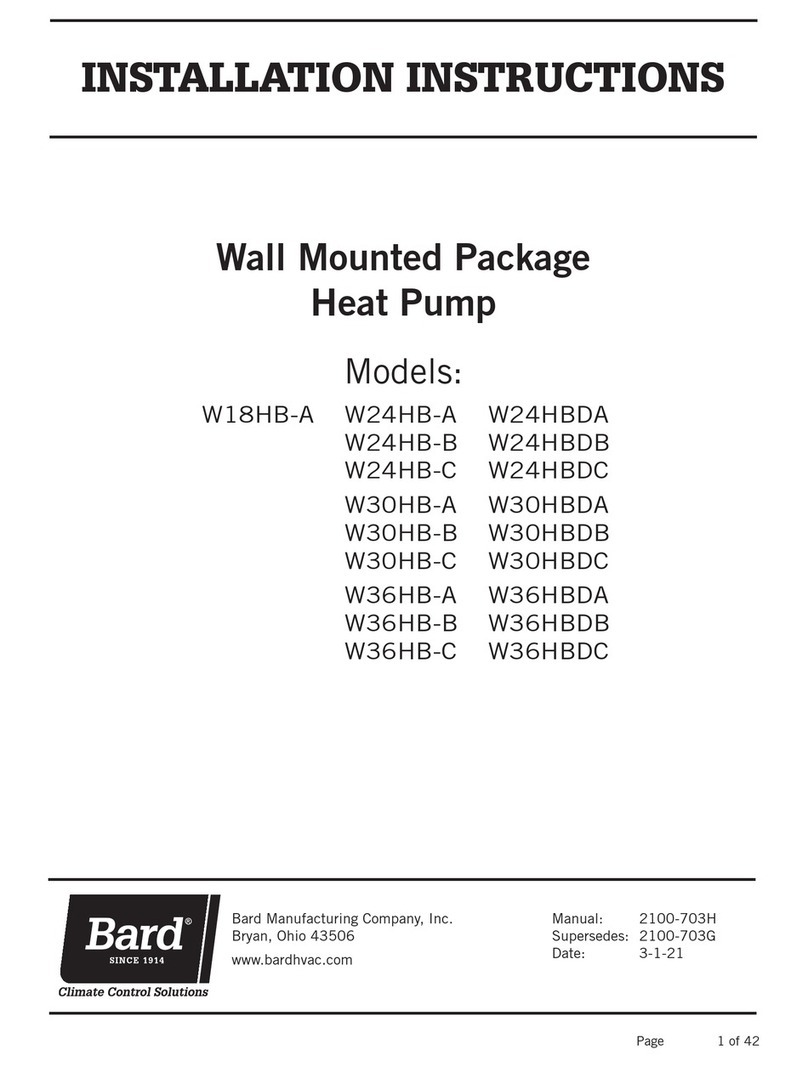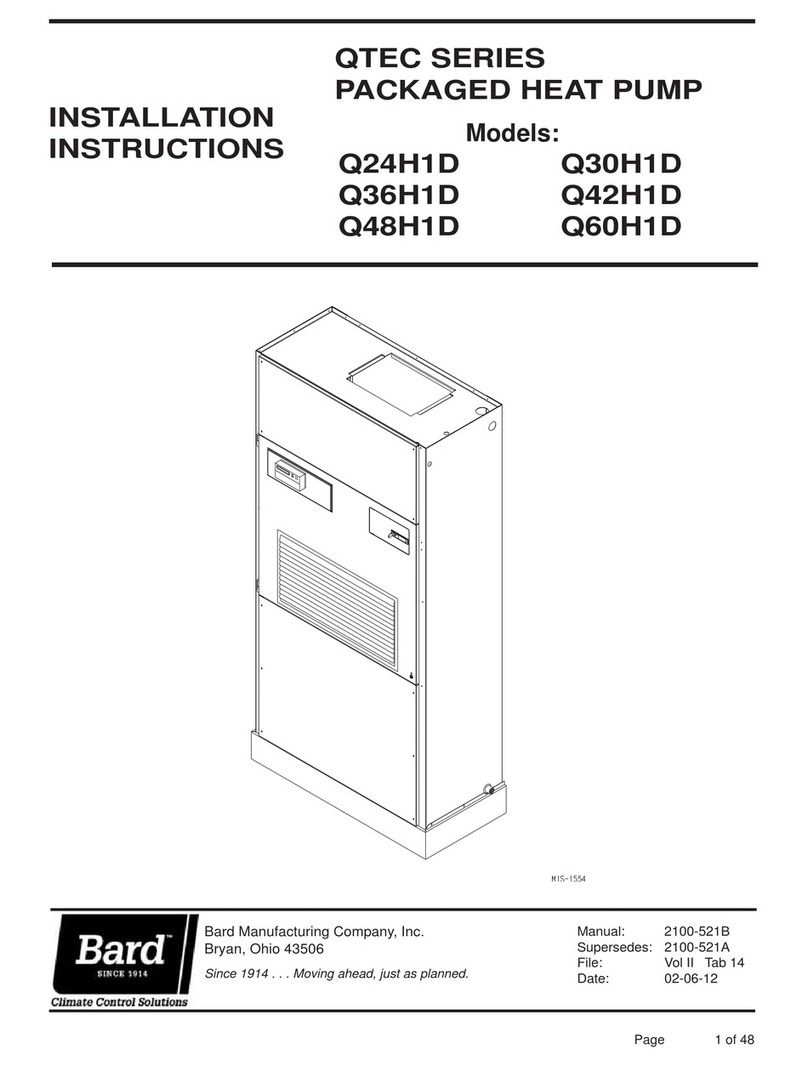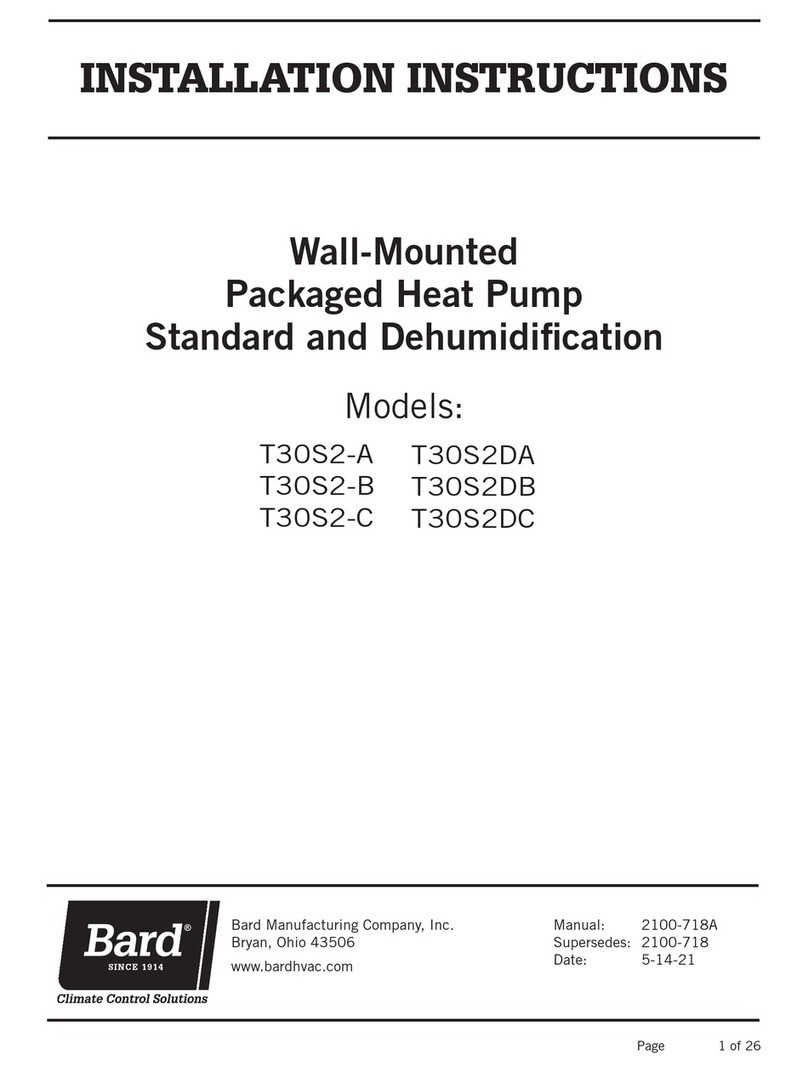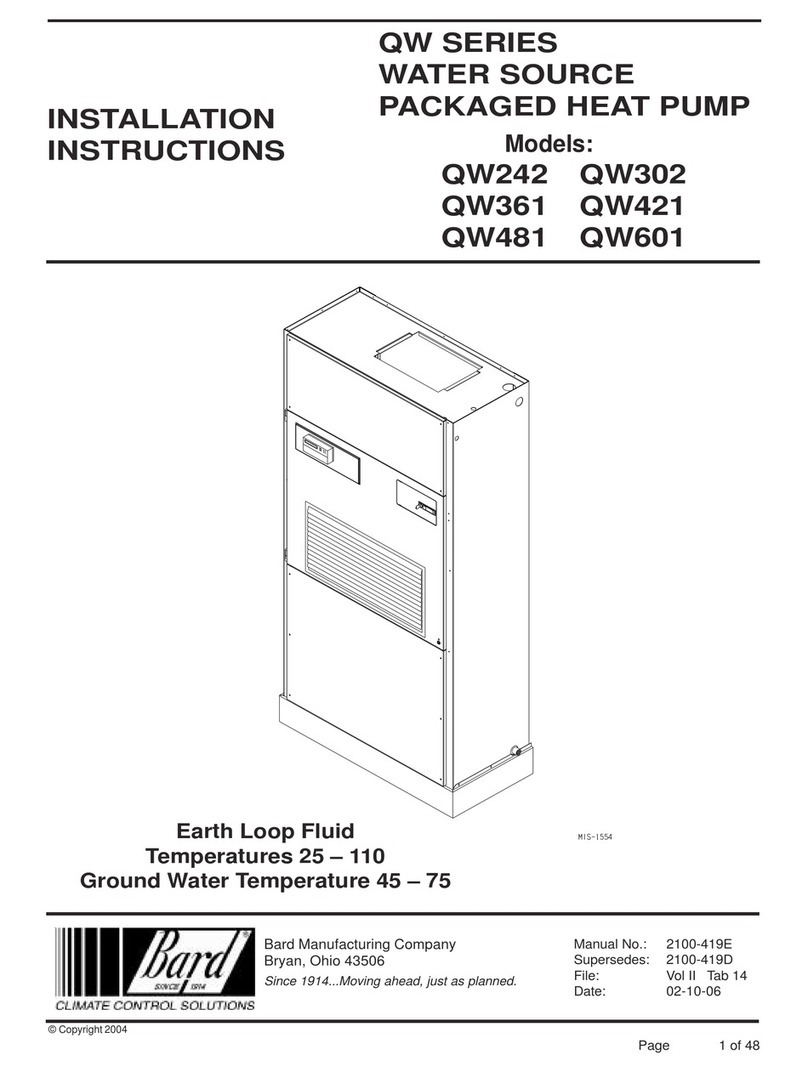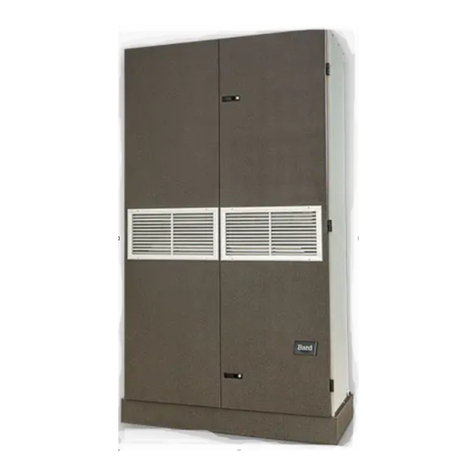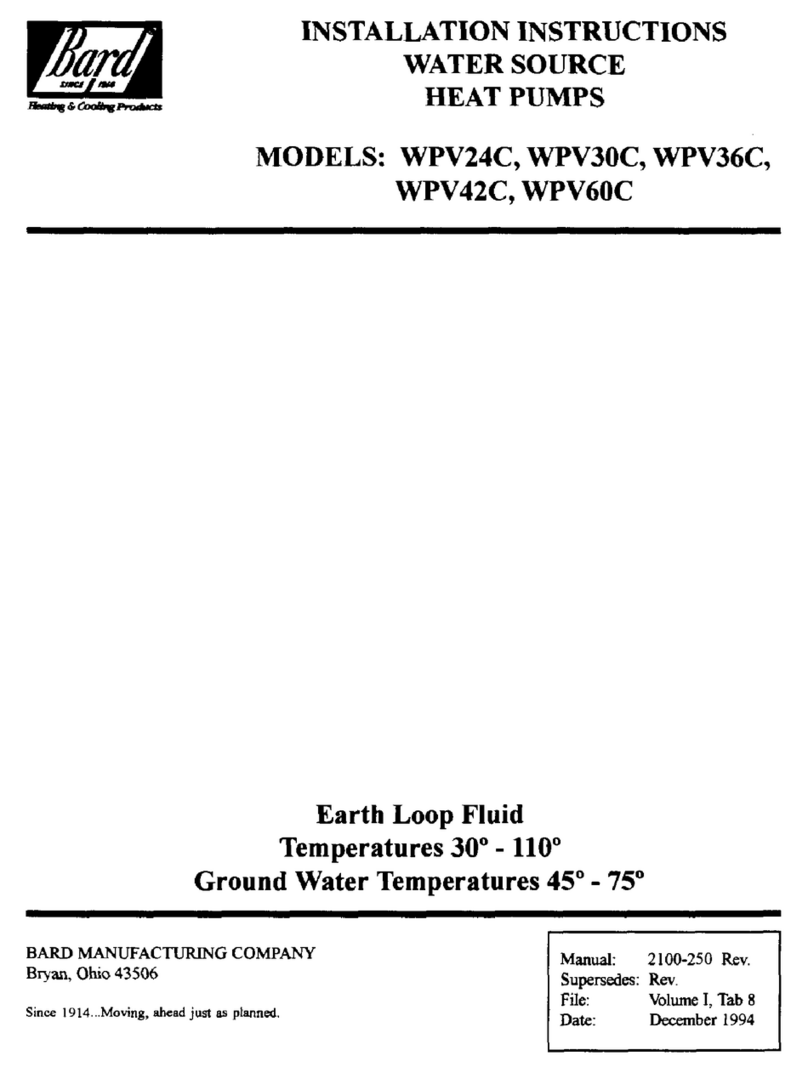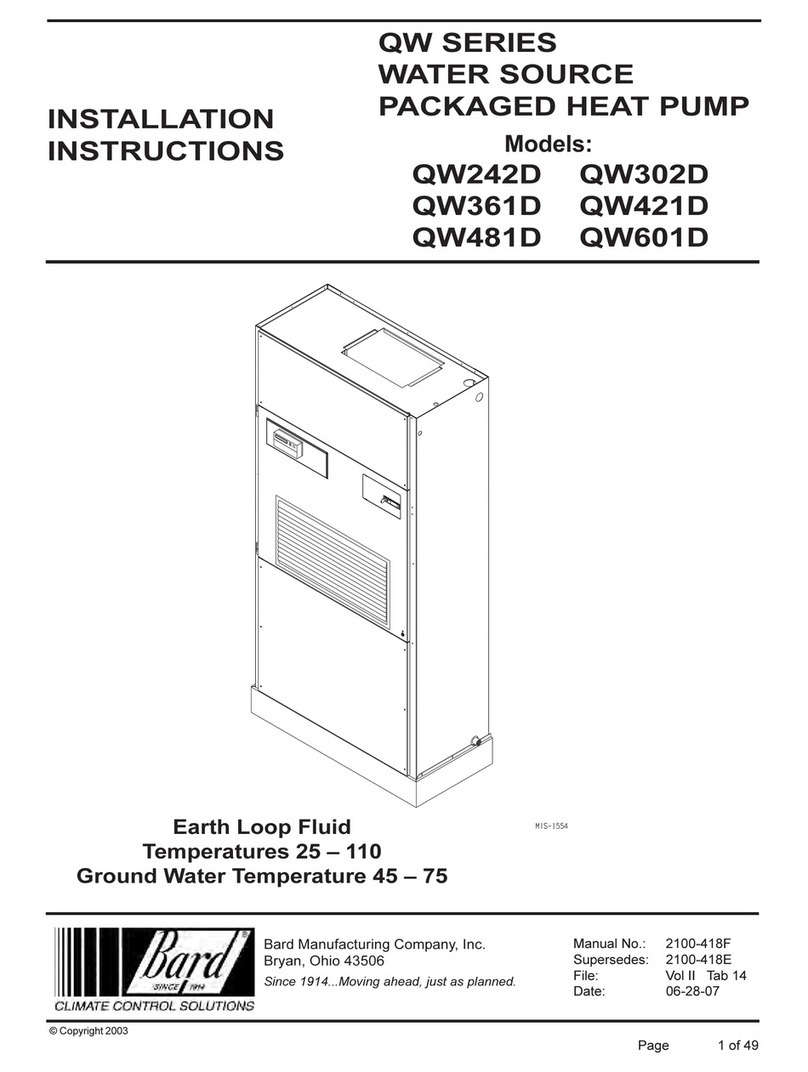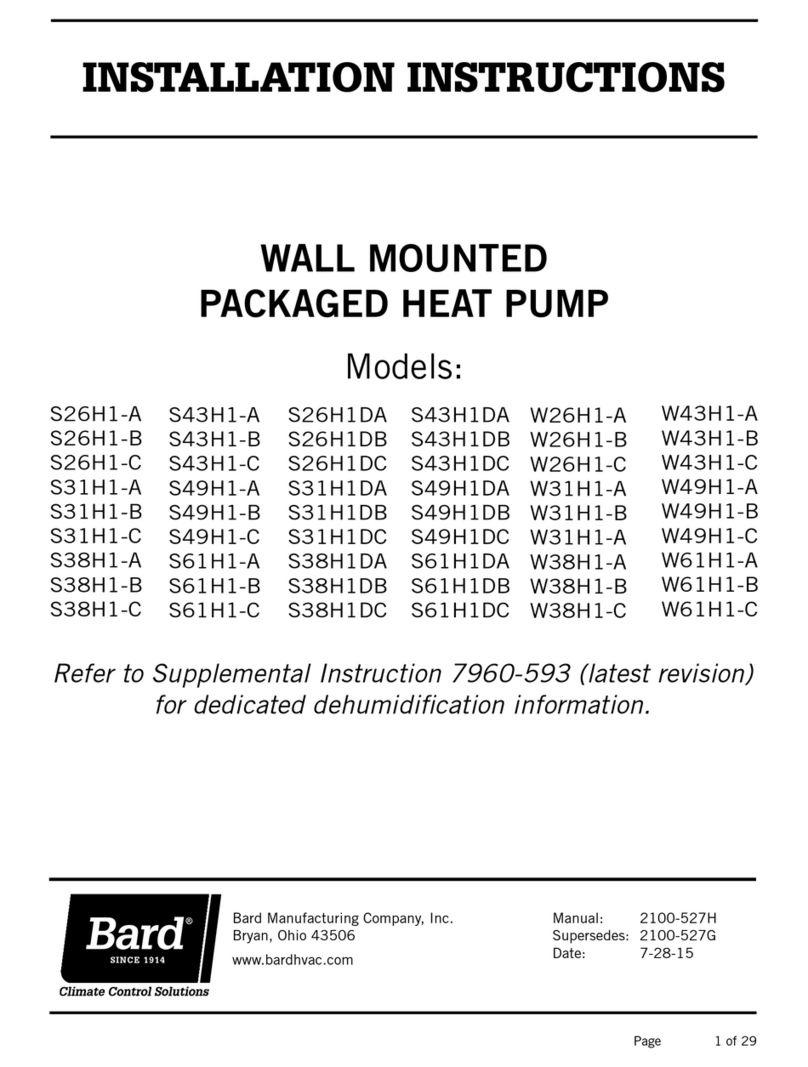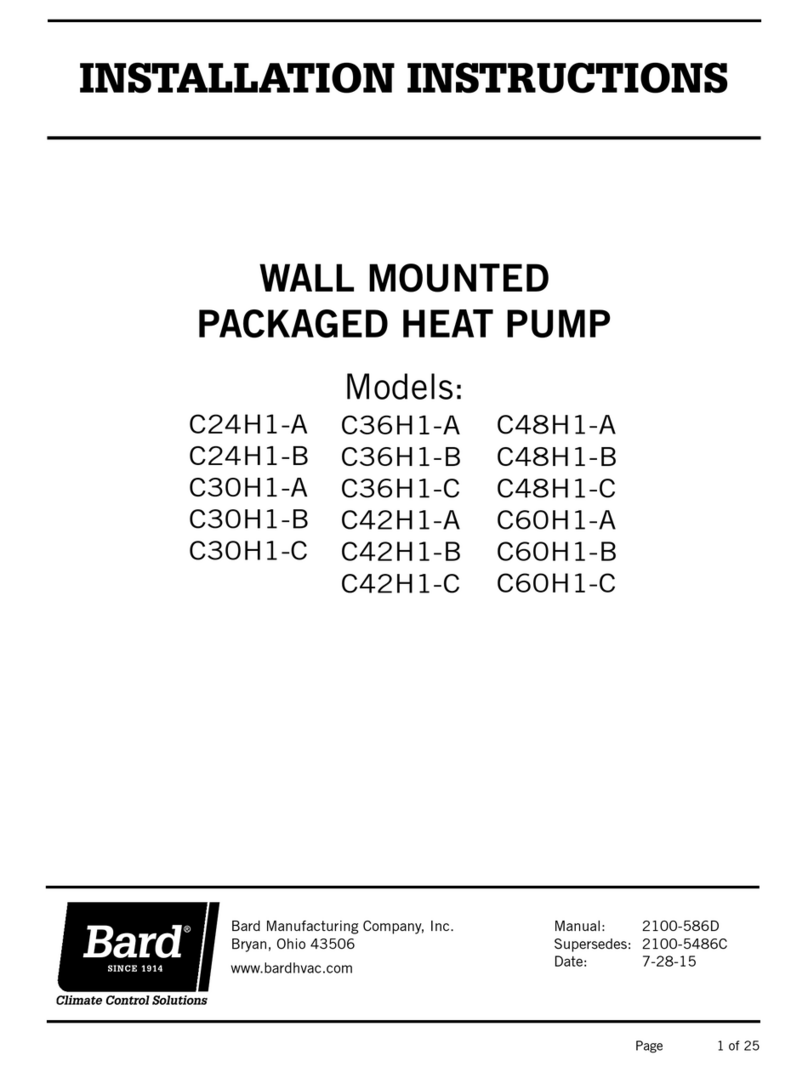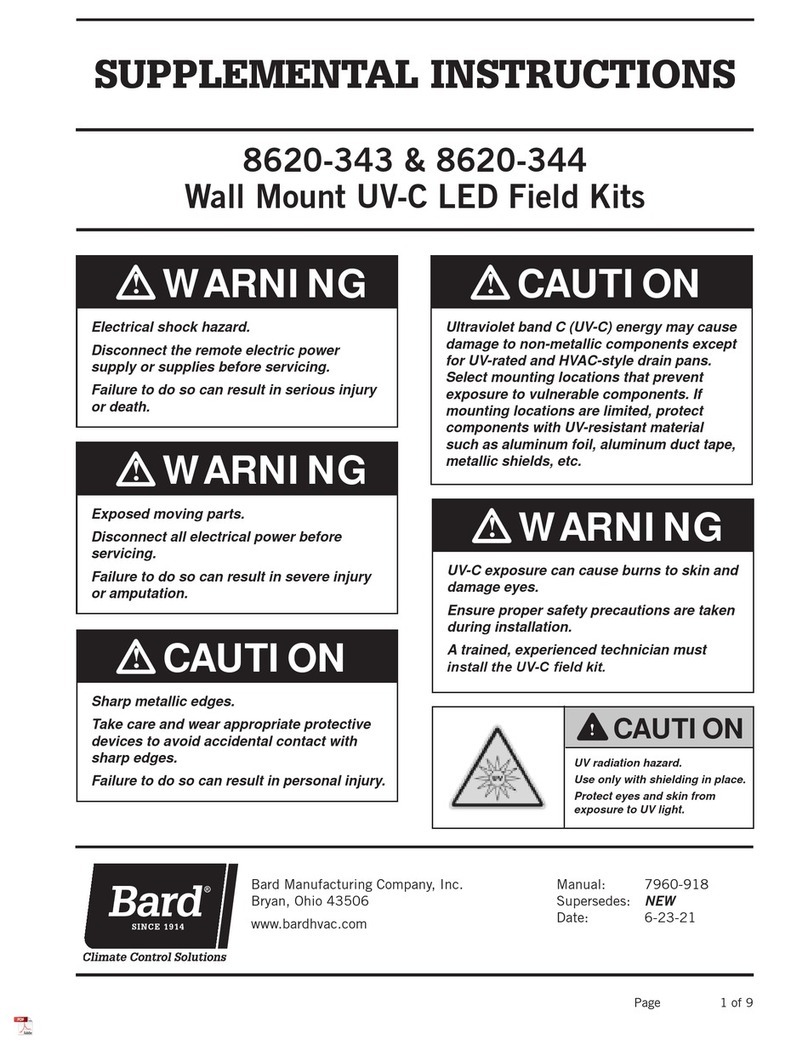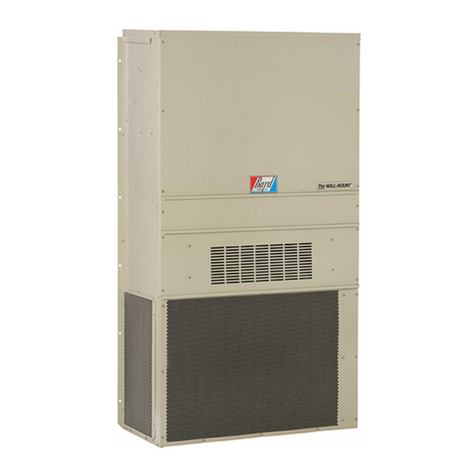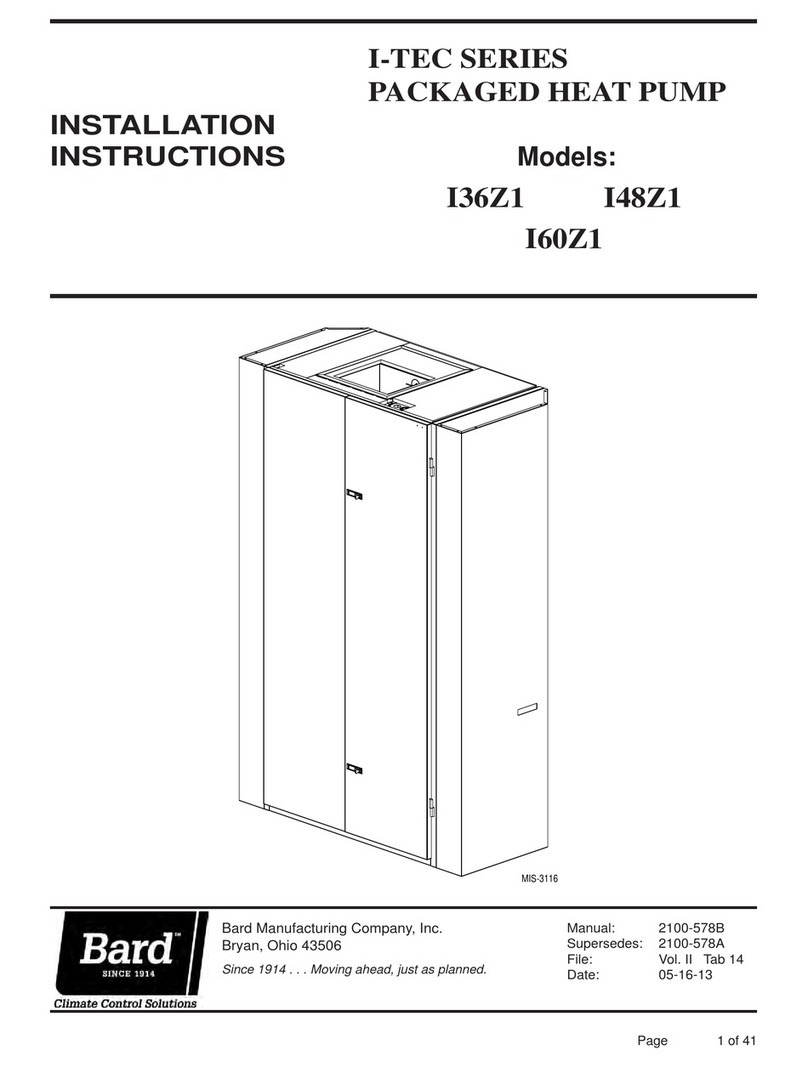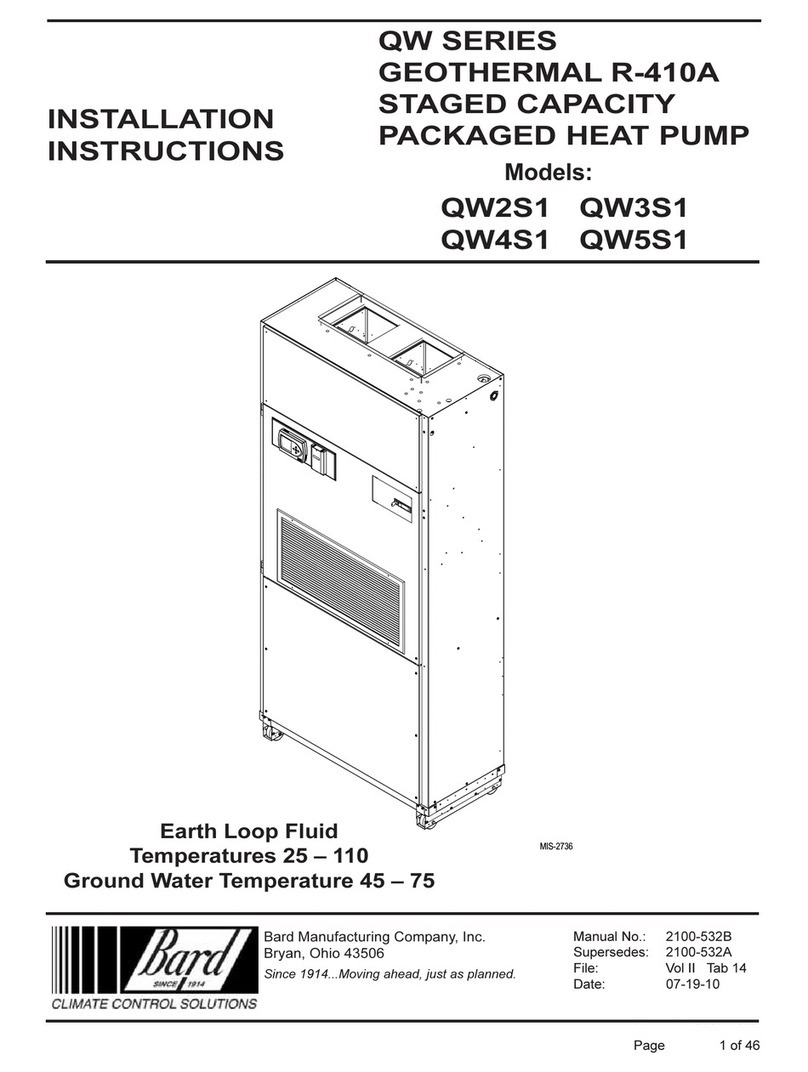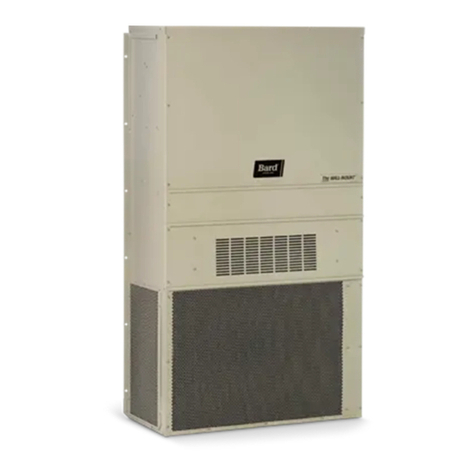
Manual 2100-403
Page 16
SEQUENCE OF OPERATION
COOLING – Circuit R-Y makes at thermostat pulling
in compressor contactor, starting the compressor and
outdoor motor. The G (indoor motor) circuit is
automatically completed on any call for cooling
operation or can be energized by manual fan switch on
subbase for constant air circulation.
HEATING – A 24V solenoid coil on reversing valve
controls heating cycle operation. Two thermostat
options, one allowing "Auto" changeover from cycle to
cycle and the other constantly energizing solenoid coil
during heating season, and thus eliminating pressure
equalization noise except during defrost, are to be used.
On "Auto" option a circuit is completed from R-W1 and
R-Y on each heating "on" cycle, energizing reversing
valve solenoid and pulling in compressor contactor
starting compressor and outdoor motor. R-G also make
starting indoor blower motor. Heat pump heating cycle
now in operation. The second option has no "Auto"
changeover position, but instead energizes the reversing
valve solenoid constantly whenever the system switch
on subbase is placed in "Heat" position, the "B"
terminal being constantly energized from R. A
Thermostat demand for heat completes r-Y circuit,
pulling in compressor contactor starting compressor and
outdoor motor. R-G also make starting indoor blower
motor.
DEHUMIDIFICATION
OCCUPIED MODE
VENTILATION SEQUENCE – The ERV and indoor
blower will be continuously energized when the timer is
energized.
COOLING SEQUENCE – On a call for cooling, the
compressor of the unit is energized to provide cooling.
A call for cooling cancels dehumidification mode.
Cooling mode is only available when the timer is
energized.
HEATING SEQUENCE – On a call for heating, the
compressor and reversing valve of the unit are energized
to provide heat pump heating. If the room temperature
falls below the 2nd stage heating set point backup
electric heat is energized. Heat pump heating is only
available when the timer is energized. If heating is
energized any call for dehumidification is ignored. If
dehumidification is already energized a call for 2nd
stage heating is needed to cancel dehumidification
mode.
DEHUMIDIFICATION SEQUENCE – On a call for
dehumidification the compressor and three way valve of
the unit are energized to provide dehumidification.
Dehumidification mode will continue until the
humidistat is satisfied. If the room temperature falls
below 1st stage heating setpoint, electric heat will be
energized by the room thermostat and cycle to maintain
room temperature. If 2nd stage heating setpoint is
reached, dehumidification is de-energized and heat
pump heating is energized. A call for cooling cancels
dehumidification mode.
UNOCCUPIEDMODE
Cooling, heating, emergency heat and ventilation are
inhibited.
DEHUMIDIFICATION SEQUENCE – On a call for
dehumidification the compressor and three way valve of
the unit are energized to provide dehumidification.
Dehumidification mode will continue until the
humidistat is satisfied. If the room temperature falls
below 65 degrees and dehumidification is energized,
electric heat will be energized by the return air
thermostat and cycle to maintain room temperature.
PHASE MONITOR
All units with three phase scroll compressors are
equipped with a 3 phase line monitor to prevent
compressor damage due to phase reversal.
The phase monitor in this unit is equipped with two
LEDs. If the Y signal is present at the phase monitor
and phases are correct, the green LED will light. If
phases are reversed, the red fault LED will be lit and
compressor operation is inhibited.
If a fault condition occurs, reverse two of the supply
leads to the unit. Do not reverse any of the unit factory
wires as damage may occur.
SERVICE HINTS
1. Caution homeowner to maintain clean air filters at all
times. Also, not to needlessly close off supply and
return air registers. This reduces air flow through the
system, which shortens equipment service life as well
as increasing operating costs.
2. Switching to heating cycle at 75° F or higher outside
temperature may cause a nuisance trip of the remote
reset high pressure switch. Turn thermostat off, then
on to reset the high pressure switch.
3. The heat pump wall thermostats perform multiple
functions. Be sure that all function switches are
correctly set for the desired operating mode before
trying to diagnose any reported service problems.
4. Check all power fuses or circuit breakers to be sure
they are the correct rating.
5. Periodic cleaning of the outdoor coil to permit full
and unrestricted airflow circulation is essential.




















